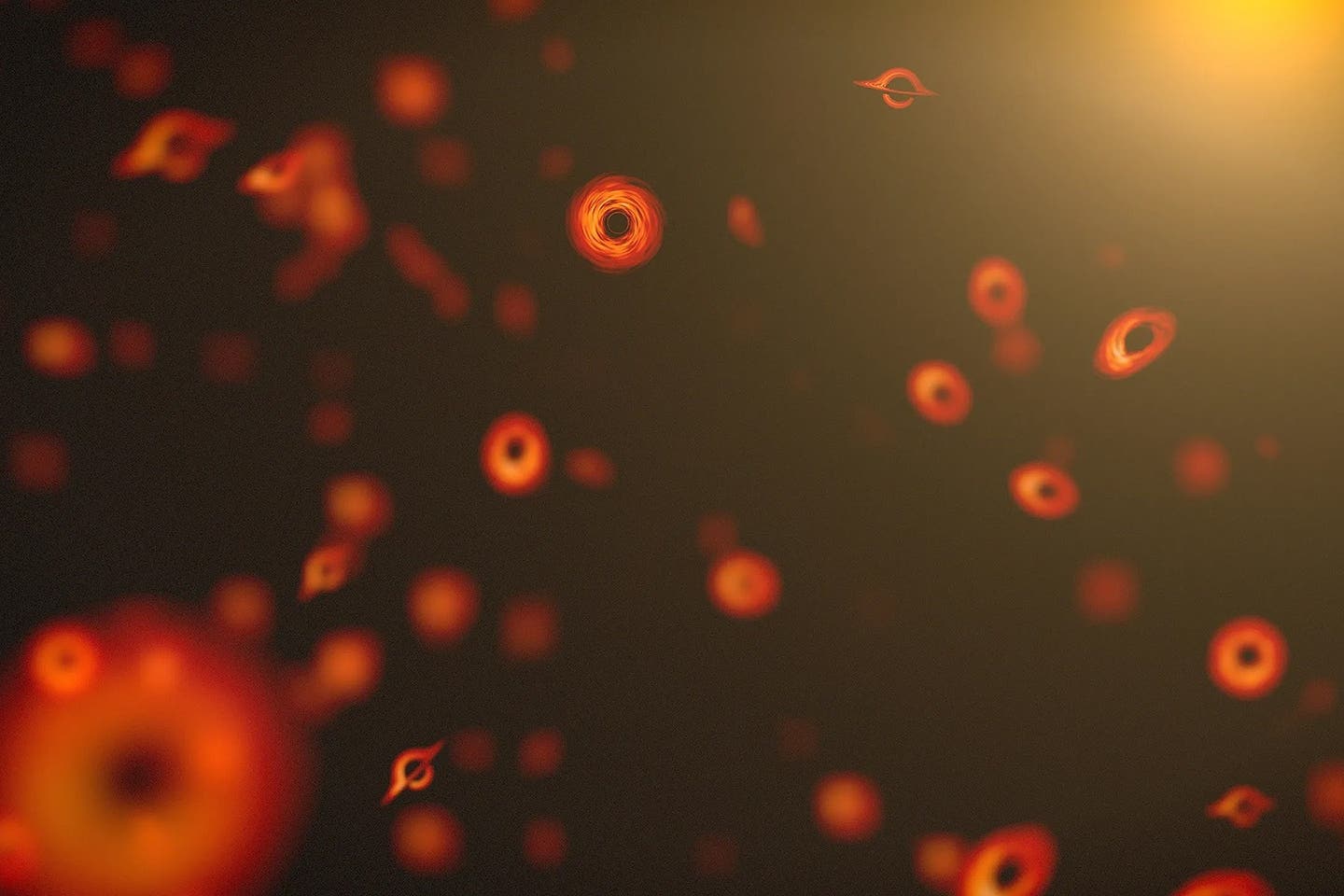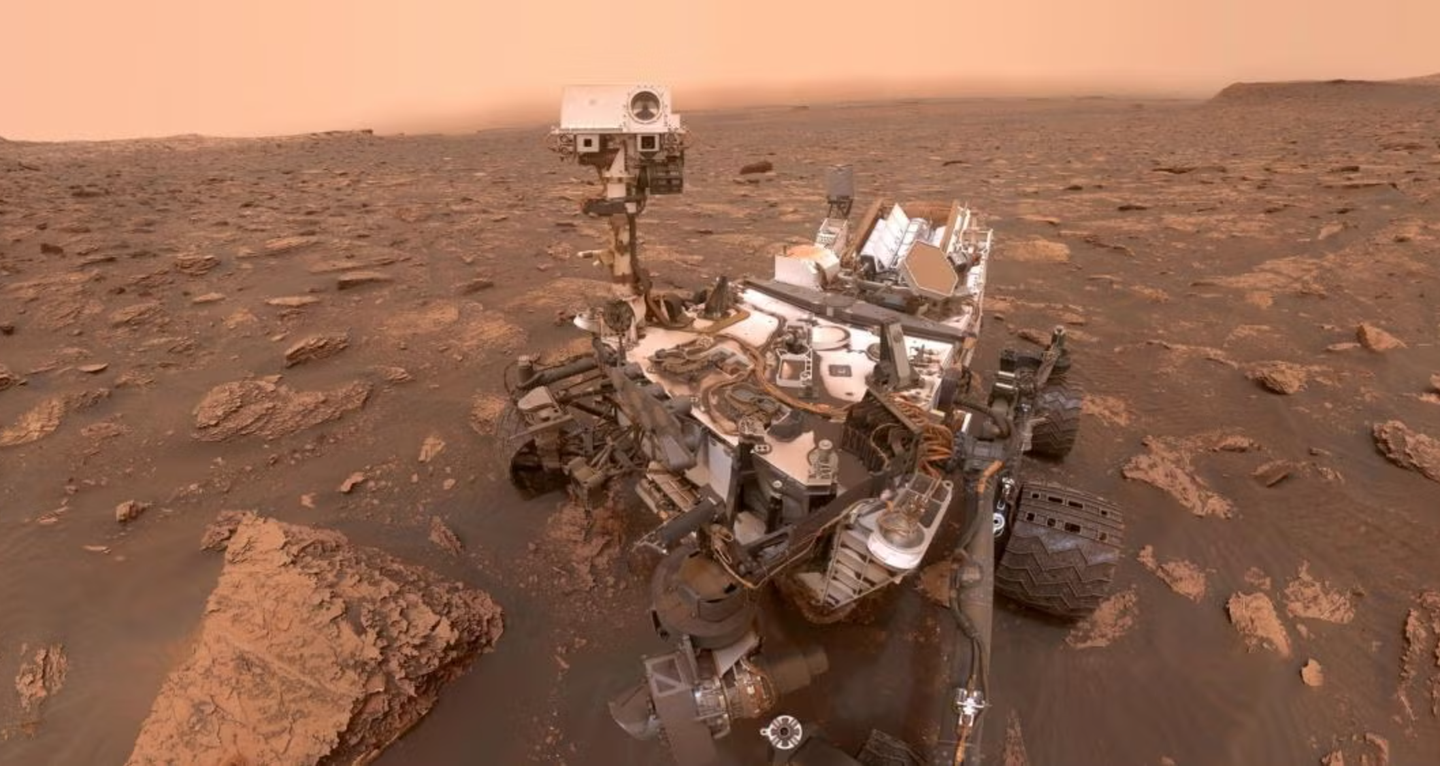NASA’s Curiosity Rover may have discovered life on Mars, study finds
The recent Mars rover unmanned mission has uncovered mud formations that tell tales of wet and dry spells spanning millions of years.

[Jan. 21, 2023: JJ Shavit, The Brighter Side of News]
NASA’s Curiosity Mars rover. (CREDIT: NASA/JPL-Caltech)
On the barren, cold expanses of Mars, a discovery has rocked the scientific world. The recent Mars rover unmanned mission has uncovered mud formations that tell tales of wet and dry spells spanning millions of years.
Could this revelation enhance the argument for life having existed on Mars? According to the research paper titled ‘Sustained wet-dry cycling on early Mars’ published in the prestigious peer-reviewed journal Nature, the answer looks promising.
The Hexagonal Clues
At the core of this breakthrough is the discovery of distinctive hexagonal patterns. These shapes, as scientists understand them, emerge when regions experience extended periods of wetness followed by prolonged dryness.
While it's been acknowledged that Mars holds remnants of dried rivers, lakes, and even seas – a testament to its once wet environment, the finding that Mars underwent wet-dry cycles multiple times potentially revolutionizes our understanding of the planet's past and its suitability for life.
Related Stories
William Rapin, the lead researcher of the study and a distinguished scientist at the French National Center for Scientific Research in Toulouse, France, commented, “We now have for the first time vestiges of times that could have been conducive to the origin of life.”
But what does this cyclic wet and dry phase mean in the broader context of life's emergence? These dry spells may have been pivotal periods allowing organic compounds accumulated during wet seasons to intermingle.
As Rapin emphasized, conditions like these can stimulate the formation of complex molecules, including DNA. "On Earth," Rapin told Space.com, "people have run experiments that have shown that if you subject a rock to cycles of wet and dry spells, simple organic molecules can combine and form larger molecules, such as proteins, and even RNA and DNA."
In situ observations of polygonal ridges. (CREDIT: Nature)
Beyond the Ordinary: The Y-Shaped Cracks
Another highlight of the finding is the uniqueness of the mud formations. While past explorations revealed ‘T’ shaped mud cracks, this mission has, for the first time, unveiled hexagonal ‘Y’ shaped formations on Mars. Such patterns aren’t just intriguing geometrically, but they indicate a notably long sequence of wet and dry epochs, shedding light on Mars’ climatic history.
However, their existence also poses a question: Why weren’t they detected earlier? The answer lies in their vulnerability. ‘Y’ formations are extremely prone to erosion, potentially explaining their elusive nature up until now.
Extended Data Fig. 1 Context of observations in Gale crater, Mars. (CREDIT: Nature)
Gearing Up for the Hunt for Martian Life
The implications of this discovery are far-reaching. With knowledge about Mars' wet-dry cycles and the conditions most conducive to life, the scientific community is better equipped than ever before in the search for extraterrestrial life.
The newfound mud formations, bearing clues of possible organic activity, have given researchers a more targeted area to investigate. It's a massive step forward in our relentless quest to determine if Mars ever hosted life forms, even if they were just microscopic entities.
Hexagonal cracks discovered on Mars by NASA’s Curiosity rover could only have formed during long cycles of wet and dry conditions. (CREDIT: NASA/JPL-CALTECH/MSSS/IRAP)
Mars, often seen as our desolate neighboring planet, continues to unravel its mysteries, challenging our perceptions and fueling our curiosity. Each discovery brings us closer to understanding not just Mars, but the broader universe and our place within it.
The Mars rover mission's latest findings are not just about unique mud formations; they're about the potential stories these formations hold, stories of life's resilience, adaptability, and the infinite possibilities that lie beyond our Earthly realm.
For more science stories check out our New Discoveries section at The Brighter Side of News.
Note: Materials provided above by the The Brighter Side of News. Content may be edited for style and length.
Like these kind of feel good stories? Get the Brighter Side of News' newsletter.
Joseph Shavit
Head Science News Writer | Communicating Innovation & Discovery
Based in Los Angeles, Joseph Shavit is an accomplished science journalist, head science news writer and co-founder at The Brighter Side of News, where he translates cutting-edge discoveries into compelling stories for a broad audience. With a strong background spanning science, business, product management, media leadership, and entrepreneurship, Joseph brings a unique perspective to science communication. His expertise allows him to uncover the intersection of technological advancements and market potential, shedding light on how groundbreaking research evolves into transformative products and industries.



